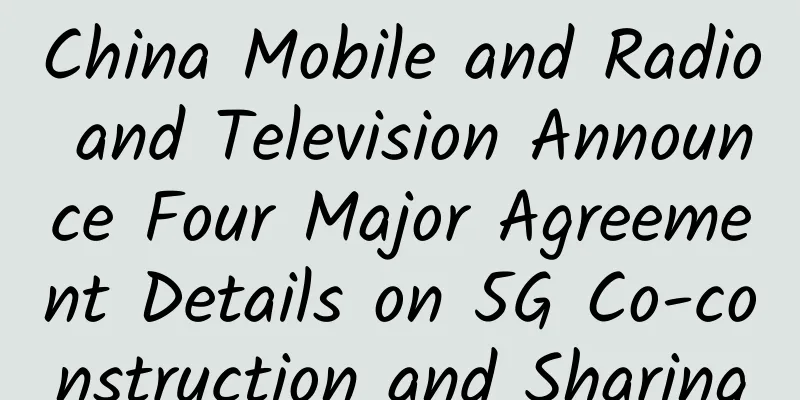Before number portability came, those days of “crying wolf”

|
In March 2019, Beijing was still chilly in early spring. No. 31 Financial Street was bustling with people as usual. After nine o'clock in the morning on the 4th, Yang Jie got up and took the elevator to the lobby, where his old colleagues and subordinates who had fought together were waiting for him. Today, Yang Jie will walk from No. 31 to No. 29, where China Mobile Group is located. His identity has officially changed from the helmsman of China Telecom to the chairman and party secretary of China Mobile. Three and a half years ago, Wang Xiaochu, then chairman of China Telecom, also bid farewell to his colleagues in tears in the same hall and went to China Unicom. On the same day, Xi Guohua retired and Shang Bing took over as chairman of China Mobile. In this transfer, Chang Xiaobing, then chairman of Unicom, and Wang Xiaochu exchanged positions. However, less than half a year later, Chang Xiaobing was arrested by the Eighth Central Inspection Team. At the end of that year, Telecom issued an announcement on the Hong Kong Stock Exchange that Yang Jie would act as chairman. The reason behind that personnel change was that the 4G licenses had just been issued and the user market was ready to take off in the storm. This time, the change happened on the eve of 5G, and number portability became the new trend of this spring. 01|3G takes the blame When China Unicom was founded in 1994, China Telecom was still under the Ministry of Posts and Telecommunications. It was not until 2000 that the prototype of the three major operators was basically established. Although there was a brief era of seven major operators due to the participation of China Tietong and Jitong, in the end, the three major operators are still the current ones. Before 2000, fixed-line phones were still the mainstay of the Chinese market since the 1990s. Although Motorola and Nokia were the market leaders at the time, the number of mobile phone users was growing rapidly and could not be compared with fixed-line phones. Among the three companies, China Unicom and China Mobile were responsible for mobile phone services, while China Telecom was assigned to take charge of fixed-line services. Among the three major operators, China Unicom was established the earliest, but it was also the one with the worst luck. When the Ministry of Information Industry was established in 1998, it took stock of China Unicom's assets and found that it only had 2.3 billion yuan, a debt ratio of 87% and a business share of only 7%. Even though China Unicom later took the lead in joining hands with Apple and attracted a lot of users, it was not until the end of 2018 that its user base exceeded that of China Telecom, instead of always being at the bottom. In early 2009, the Ministry of Industry and Information Technology issued 3G licenses, but this did not bring about a stimulating leap in China's smartphone market and user capacity market. For the three major operators, those years were more of a "guilty conscience". The existence of 3G was better advertised than the network. Whether it was China Mobile's TD-SCDMA, China Telecom's CDMA, or China Unicom's WCDMA, they essentially did not bring users a true 3G experience. However, relying on the stock of 2G era, China Mobile was far ahead at that time, with the highest revenue and number of users among the three. At the end of that year, its number of users reached 522 million, and its annual revenue was 452.1 billion yuan, while China Unicom, which was at the bottom, was 153.95 billion yuan. However, the issuance of 3G licenses, in addition to the network standards of each of them, also made the three major operators realize that this was a good time for terminal assistance. At this time, under the leadership of Chang Xiaobing, the then chairman of Unicom who had just managed the corporate restructuring, Unicom made a decisive decision and reached a three-year exclusive sales agreement with Apple for the first time, which not only saved face, but also laid the groundwork for the subsequent efforts to increase the number of 3G users and gain a firm foothold in the 4G era. However, the iPhone has always used Qualcomm chips, which are not compatible with China Mobile's TD-SCDMA standard. In the years of 3G, China Mobile watched helplessly as users switched to China Unicom one by one. At that time, China Unicom's monthly new 3G users reached one million. Later, China Telecom also relied on its cooperation with Apple to grab a large number of users at the end of 3G. Although the network services provided by operators in the 3G era were full of "embarrassment", the growth brought by the mutual promotion between them and smartphone manufacturers should not be underestimated. Two years after 3G was put into operation, with the help of Apple's entry into China, the proportion of attention in the mainland smartphone market reached 81.8% that year. The "China Cool Alliance (ZTE, Huawei, Coolpad, Lenovo)" spawned by operators was very active, and advertisements of "recharge phone bills and get a free phone" were everywhere. With the later entry of Xiaomi, the entire market has prepared a large canvas for the arrival of 4G. Compared with China Unicom and China Telecom, China Mobile, which failed to join hands with Apple, was also not idle. Although it did not have the advantage of 3G services and passively lost many users to China Unicom and China Telecom, it still relied on user inertia to increase its 3G user base to 82.4 million in 2012. At the same time, it is also deploying TD-LTE networks, all waiting for the arrival of 4G to turn the situation around. However, those years when 3G was scarce were precisely the period when the new value-added services of the three major operators rose rapidly. 02|4G disrupts the market Take China Mobile as an example. Starting in 2003, various provinces launched ringback tone services one after another. Later, Li Xiangdong, then manager of the data department of Sichuan Company, proposed to develop the ringback tone service in a unified mode, thus establishing China Mobile Music Base. The emergence of the base model has a profound impact on China Mobile. It not only involved the corruption case that China Mobile was criticized for in the following years, but also became an important factor affecting the user map in the 4G era. Music Base uses an Internet distribution model, which makes traditional record companies love and hate it. What they love is the irresistible temptation of the share of profits brought by digital music, and what they hate is that this move almost blinded the traditional record industry without any transition. At that time, Music Base specially built a website 12530, where users can directly download the most popular singles as their own ringtones. There are also ringtone versions and full song versions, which are charged differently. In addition, record companies cannot directly provide ringtone versions, which must be intercepted and produced by a third-party company designated by Music Base. And this "interception" of more than ten seconds requires the copyright owner to pay the third-party producer. By 2009, the total network revenue of Wireless Music Base exceeded RMB 22 billion, which was 4.2% of China Mobile's annual revenue and 16.8% of all value-added service revenue, even exceeding Sichuan Mobile's total traditional revenue. It was such a big cake that China Mobile came up with the idea of replicating the "base" model. Afterwards, nine bases for data services were successively established. After the establishment of several major bases, the problems that followed also surfaced. The original base model was to be affiliated with a provincial company or a directly-administered company, and the base distributed business to provincial companies across the country in terms of a single business through the group's KPI distribution. Before China Mobile's brand integration, it had three sub-brands: China Unicom, M-Zone, and Global Connect. The business lines corresponding to each brand were complicated. Not only did the packages have more than a dozen models, but the value-added services superimposed on them also dazzled users. In addition, the marketing activities independently carried out by provinces and cities basically left users in a state of confusion. Corresponding to the nearly 700 million users is the generation of a large number of complaints. Although the base model was originally a membership model of "monthly subscription and benefits" such as the Wireless Music Club, and later several major bases also derived "monthly subscription benefits", the emergence of the base business is saddled with the KPI tasks issued by the group. Not only does the front desk business hall have business indicators, but the back-end batch opening and direct integration through the terminal are also common means. During peak periods, a front desk clerk needs to recommend and subscribe to dozens of value-added services to users. The direct consequence of such complex and overlapping charges is that users are gradually losing. After the Sichuan Mobile and Zhang Chunjiang corruption case broke out, China Mobile conducted internal rectification, cleared a number of SPs one by one, and removed some unnecessary value-added services, but retained its own five major base businesses and continued to invest resources to increase their share, which was extremely important for the rapid acquisition of users at a certain stage in the 4G era. During this period, Xi Guohua and Li Yue took over China Mobile. They had to face the reform-minded Wang Xiaochu and Shang Bing and the vigorous Chang Xiaobing, who wanted to regain the "face" lost in 3G. On the other hand, facing China Mobile's base model, China Unicom and China Telecom also followed suit. China Telecom established its own game, reading and video bases, and expanded its business under the Tianyi brand name, while China Unicom expanded under the "Wo" brand. But again, the three operators have launched value-added services that are more or less offensive to users during this period. Although number portability has not been actually implemented, there are countless cases of network withdrawal and network transfer. In fact, the government issued relevant documents on number portability as early as 2006, but the actual operation has been stagnant. In 2010, the Ministry of Industry and Information Technology issued a document approving Tianjin and Hainan as the first batch of pilot provinces and cities for number portability, but it was not until four years later that Hainan officially provided users with two-way number portability service trials, but there were still restrictions on number segments. The reason why other provinces "avoided talking about it" is easy to understand. It was a critical moment for 4G deployment. A large stock of users was one thing, and user loss was another. China Mobile could not lose its most important user base, and China Unicom and China Telecom could not lose the users they had finally attracted with 3G and Apple. On the eve of 4G, everyone was both ready to go and ready to face a formidable enemy. In December 2013, the long-awaited 4G license was officially issued. 03|Anxiety is everywhere In the initial stage of 4G promotion, users were not as excited as expected. The reason was nothing but "prices". In early 2014, a saying circulated on social media that "the price of using 4G traffic for one night is equivalent to that of a house" caused panic among users. The user market brought by 4G did not soar as expected by the three major operators, but instead brought about a large number of cancellations of other value-added services. For the three major operators, the most beneficial services in the 4G scenario are these new services, whether it is games or videos, the horn has already sounded. At this time, many years had passed since the Sichuan Mobile case, and the internal reform led by Li Yue was still ongoing. The base model, which was controversial but had strategic deployment significance, was about to face "essential" adjustments. In the two years before this, China Telecom, which had been a model imitator of China Mobile, took the lead in operating the base model independently before the advent of 4G. China Telecom knew that the existing base model not only consumed a lot of costs, but also had no advantages in the competition of Internet products. Once 4G licenses were issued, users would become more proactive in choosing products and emphasize experience. In order to retain users, China Telecom adopted the method of splitting the base model into two, introducing external cooperation, and directly promoting it to the market. In addition to the existing broadband advantage, the various business lines were not strongly bundled. After the 4G license was issued, they firmly grasped their own users and also used the marketing of broadband free phone cards to pry some cheese from the other two companies. In the spring of 2014, the implementation of the "Broadband China" strategy, the promotion of the integration of three networks, and the development of 4G were the core issues. Although 4G charges were still a sword hanging over the hearts of users, none of the three operators could break through the bottleneck of charges in the short term. In other words, the liquidity of the user market was not large at this stage. In terms of broadband construction, there was no leading advantage, and the cost of tariff concessions was obviously not as large as that of China Telecom and China Mobile. China Unicom was quite anxious at this time. The user market that it had struggled to win in the 3G era seemed a bit helpless in the face of 4G. Two years after the 4G license was issued, China Unicom's revenue and profits went from bad to worse. In 2016, its operating income was more than 200 billion yuan, and its net profit was close to 500 million yuan, which was only a fraction of 2015, making it the worst year in the 15 years since its listing. With the other two carriers eyeing the user market and the corruption caused by the former chairman Chang Xiaobing, China Unicom was forced to become the first of the three major operators to undergo mixed reform. After BAT, Suning, and JD.com entered the market, the marriage with these Internet giants really helped China Unicom. The sales of Tencent King Card alone prevented China Unicom from losing a large number of users during the 4G era. After the license was issued, China Mobile still had the largest user base. Facing the risks brought by the 4G business deployment and base model and the envy of the Internet dividend, China Mobile decided to make a drastic move to unify the five major content bases into a corporate model, establish Migu as an independent company in the digital sector, and plan to merge or split it for listing in the next few years when necessary. The five subsidiaries of Migu are responsible for the important task of attracting traffic and users for digital content services in the 4G era. This is different from the previous model where the group gave KPIs to provincial companies for these businesses. China Mobile and Migu, which have de-KPIized, have changed the direction of this interactive relationship. Simply put, in the past, provincial companies had to meet the value-added service indicators, but now it is more user-oriented. Provincial companies actively choose which services are good and have fewer complaints to promote. This "turnaround" made the five major bases tread on thin ice, and the market incremental demand for the existing five major content businesses has also exposed their shortcomings more clearly as 4G tariffs have gradually decreased and user stickiness has become stronger. As mentioned above, with a wide variety of main packages, many nested services, and no obvious advantages in tariffs, several key digital content services in monthly or on-demand modes also seem to be in a dilemma amid the increasing impatience of users with mobile. For the video business, under the pressure of the four major mainstream video websites, although Migu Video spent 1 billion to obtain the new media broadcasting rights for the World Cup, it is not the only beneficiary. Youku followed closely and became a broadcasting platform. In addition, Youku has obtained tens of millions of accumulated users through dramas and variety shows. Its customer acquisition cost and user retention rate are obviously greater than Migu Video. After the World Cup, Migu Video once again spent a lot of money to win the new media copyright of the CBA18-19 season, but this time they are going to "reunite" with their old rival Youku. A lot of money has been spent, but the user experience is poor and the product content lacks competitiveness, not only in videos and games, these factors have made China Mobile "unable to hold the hands of users" in the past few years. And China Mobile has obviously not played the other broadband card in the 4G era well. After frantically acquiring broadband users at low prices or for free, leaving China Unicom and China Telecom far behind, the subsequent product reputation was not satisfactory, and there were many users who abandoned the network. Although China Mobile began to plan to withdraw from the 3G network at the beginning of this year, and the Fujian company had cancelled the TD-SCDMA base station in January, in the short term, there are two paths that require continuous high costs. On the one hand, there is the comprehensive construction of 5G, and the cost of 5G network is much higher than that of 4G. On the other hand, there is the need to continue to maintain 2G and 4G. Broadband quality and service experience, these cards that China Mobile used to face the other two operators head-on in the 4G era will be played again when 5G arrives. 04|The changes under 5G may be coming soon After Chang Xiaobing was suddenly "taken away" just after he took up his post at China Telecom, Yang Jie was appointed to take the lead in times of crisis. In the most important market expansion stage of 4G, Yang Jie decisively proposed the concept of a multiple cooperation "ecological tree", which gave China Telecom an outlet for reform. Although it still loses to China Mobile in terms of the number of users, compared with China Telecom's past achievements, the number of 303 million users is really impressive. With the entry of Internet companies, China Unicom has swept away the decadence and increased its user base to 315 million. Although there is still a huge gap with China Mobile's 925 million, for the three major operators, there is a subtle flow space between these numbers. On the second day after Yang Jie took office at China Mobile, "number portability" became a new topic this spring. The three major operators took the initiative to say that they would increase network speed by 20% and reduce tariffs by 30% in 2019. For the upcoming number portability, the tariff issue that can most provoke users has become the most direct means for operators to retain users. In addition, factors such as base station construction and content experience are indispensable. Under the new trend of 5G, grabbing the track and retaining users are both a matter of flesh and blood. For the three operators, none of them can take it lightly. In the years when 4G was becoming mature, China Unicom and Telecom launched nationwide data traffic and nationwide calls. For example, the daily rental of all packages in Tencent Wang Card is nationwide data traffic, and Telecom has never been stingy in this regard. On the other hand, China Mobile has made great efforts in digital content but has not achieved the desired results. The data traffic tariff has always been "quite unpleasant". Even if it has been reduced again and again, and the packages are dazzling, it cannot change the fact that its tariff is indeed higher than that of the three. However, good tariffs are not universal. Unicom is facing the phenomenon of "large in and out" of users. Last month, China Telecom issued the first 5G SIM card, China Unicom announced that it had completed the first phase of deployment and testing in the 5G pilot area, Shanghai Mobile and Huawei launched a construction plan to start 5G coverage at Hongqiao Railway Station, and Li Yue led China Mobile to release the first self-branded 5G terminal "Pioneer One". This means that the race for 5G construction has already begun, which not only brings reforms to the B-end, but also plays a trump card for user experience and retention in the C-end market. And there are reports that with Yang Jie taking over China Mobile, Li Yue may become the new head of China Telecom under 5G, and whether he can snatch users from China Mobile may become the heavy responsibility of this veteran. If operators uniformly lower their rates in the short term, network switching will not have much impact on users. But 5G trials may very well become the key to unlocking the flow of real "number portability" users. However, if the operators' existing digital content lacks the same competitiveness as other Internet companies, then the transformation of these "value-added" businesses in the 4G era will still be useless in the 5G era. On the one hand, in terms of external conditions, in the previous network transfer trial operation, it was found that settlement between operators was a hurdle that needed to be resolved urgently. After all, the current 4G network not only provides high-speed data reading, but also other digital content services, which require VoLTE technology to achieve. Technological unification is the foundation, and increasing network transfer processing points and establishing process specifications all need to be resolved before large-scale operation. On the other hand, although number portability allows users to freely choose communication networks and avoids the hassle of changing numbers, for most users, unless there is something particularly unbearable, the chance of change is not too great under the temptations of 5G experience, rate cuts, and content that satisfies information intake. Moreover, the current network service is still bundled with broadband services, and some family numbers cannot be used in different intervals. In other words, China Mobile, which has been "complained", will not necessarily lose too many users. In addition to infrastructure, China Mobile is still willing to "use costs to retain users" under 5G. Although the user gap between China Unicom, China Telecom and China Mobile is still large, the diversion effect and user growth rate brought about by the "mixed reform" are indeed visible to the naked eye. The connection of multiple platforms can make the two operators stand more firmly on the rope of "ecology". Unlike China Mobile, China Telecom and China Unicom have gradually "corrected" the strategy of this business line after cultivating their own digital content in the 3G-4G era. They no longer emphasize self-produced content, but rely more on the power of partners. This is crucial for the targeted use of funds and resources. It is very likely that the important way for the two companies to attract new users is these "new digital contents" that can "save the country in a roundabout way". The rest is how to further solve the problem of retention. However, until the moment of the reveal, who knows? |
<<: Do these 3 steps well and data center migration can be done without interruption
Recommend
5G is here—what’s next?
As 5G standards are finalized and 5G-enabled devi...
Scenario Innovation Smart Energy | Ruijie Debuts at 2019 Petroleum and Petrochemical Information Technology Conference
From May 15th to 16th, the "2019 China Petro...
Architecture design of MQTT messaging platform for 10 million-level Internet of Vehicles
Preface With the advancement of the new four tren...
spinservers: San Jose 10Gbps bandwidth server starts at $109/month, Dallas 10Gbps server starts at $89/month
spinservers is a site under Majestic Hosting Solu...
RAKsmart: 30% off on all VPS, popular VPS starting at $1.99 per month, San Jose/Los Angeles/Japan/Hong Kong data centers
RAKsmart is offering VPS hosting at a super low p...
The Future of 5G and IoT in Smart Cities
[[438866]] In short, a "smart city" lev...
How to reduce customer churn through network visibility?
Customer churn imposes a heavy cost on businesses...
Misaka: $44/year KVM-2GB/32G NVMe/2TB/Germany (optional CN2)
Misaka is a Chinese merchant (the same company as...
Massive Data officially releases AtlasDB, an enterprise-level private cloud database
[51CTO.com original article] On July 28, Beijing ...
How unified communications technologies can support long-term remote work
[[354214]] Organizations implementing long-term r...
Do you know all the HTTP protocols?
[[390013]] 1. HTTP protocol HyperText Transfer Pr...
Let you know the more common Wi-Fi standards and types
Wi-Fi is an all-encompassing word. In a sense, it...
RackNerd: New Year 2024 series starting at $10.99/year, multiple data centers in Los Angeles, San Jose, etc.
RackNerd New Year 2024 packages are divided into ...
Can you understand Wdm in one minute?
Hello everyone, I am Xiaozaojun. [[329660]] When ...
WiFi speed is slow, try these 8 simple tips
Slow WiFi speed is always a headache, especially ...









